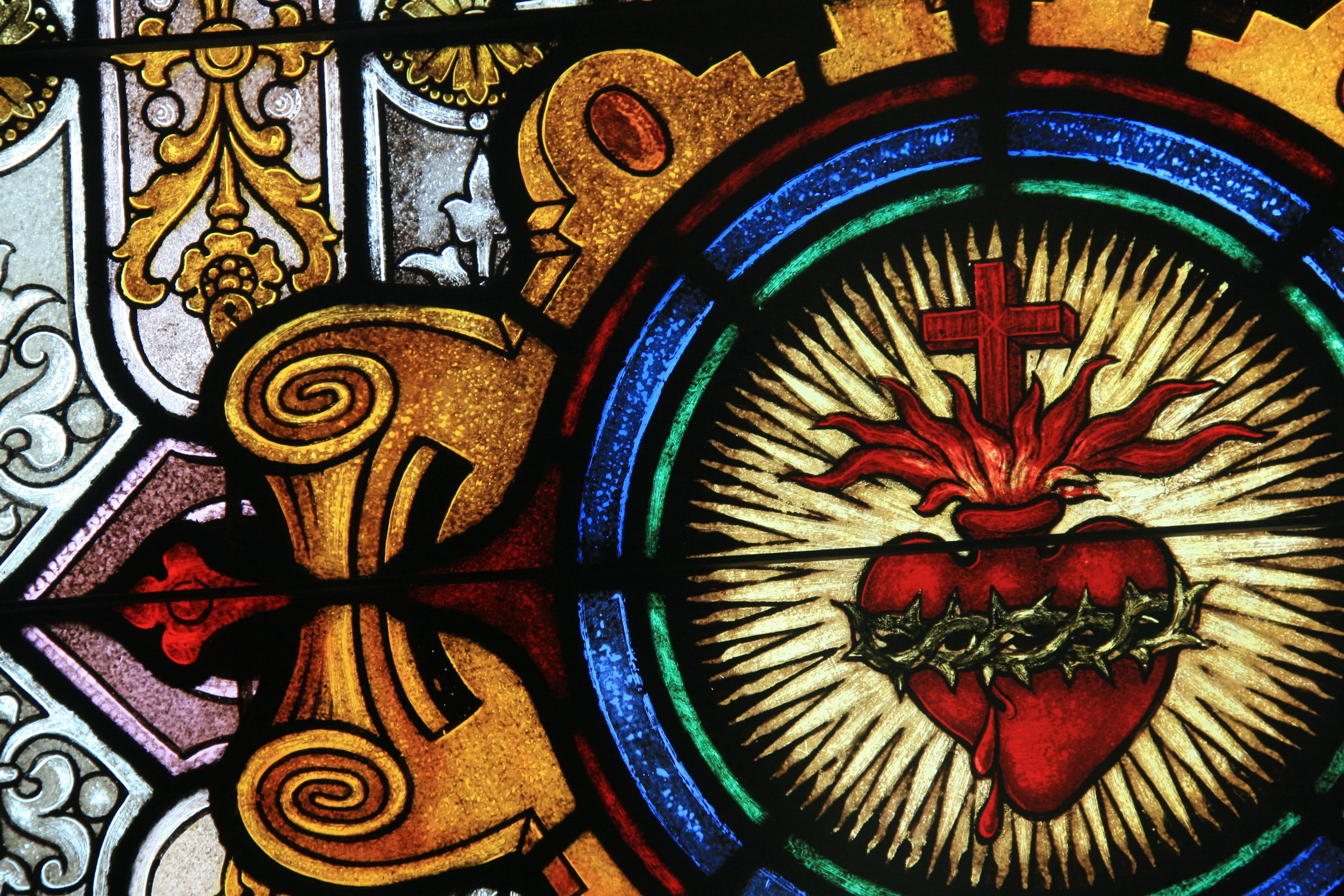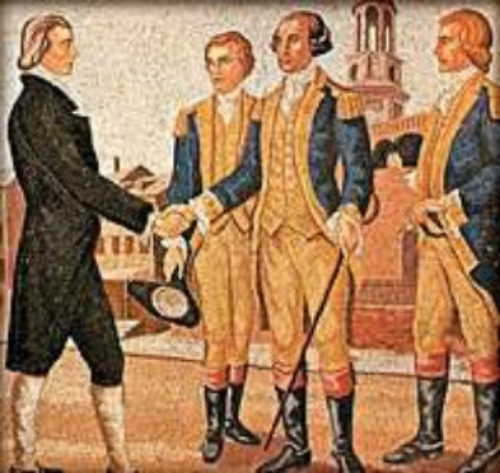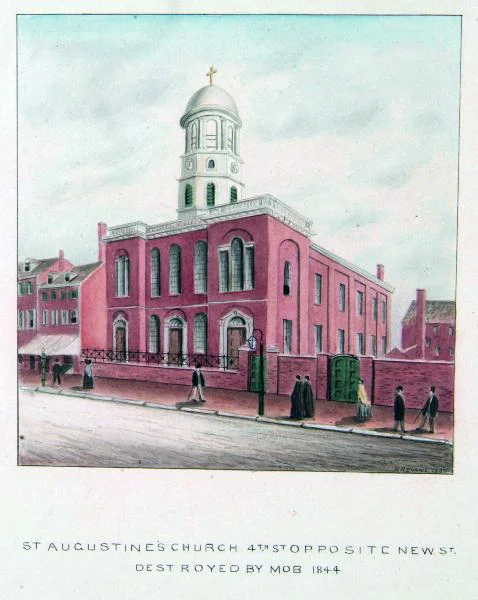225 Years of History, and still counting....
Our Mission Statement
St. Augustine parish is an open, diverse, and active Roman Catholic community rooted in the Gospel of Jesus Christ and founded in the Augustinian tradition. We invite all to participate in our worship, service to others, and our faith development and thus grow in the knowledge of God present in each other and ourselves. Our community joyfully welcomes all who are searching for a spiritual center to call home.
The History of St. Augustine Church in Philadelphia
St. Augustine's was the first permanent establishment of the Augustinian Order in the United States. Such notables as President George Washington, Commodore John Barry and merchant Stephen Girard contributed to the building funds of the original church on this site.
Father Matthew J. Carr, O.S.A., founded St. Augustine's in 1796 to serve the increasing number of German and Irish immigrants who settled in the northern sections of the city. Designed by Nicholas Fitzmaurice Fagan and completed in 1801, it stood as the largest Church in the city at that time. The bell tower, added in 1829, was the work of William Strickland, who designed a similar tower for Independence Hall. Father Carr also established St. Augustine Academy at 247 Vine Street in 1811, one of the earliest, Catholic efforts in secondary education. St. Augustine Academy was the forerunner of Villanova University.
By 1838, St. Augustine had 3,000 parishioners. In the 1840's, sentiment against the growing number of Irish Catholic immigrants was inflamed by the Press. The recently established "Know Nothing" party complained against the naturalization of immigrants. On May 8, 1844, after three days of anti-Catholic rioting, the mob burned the church and rectory. Also destroyed was one of the finest theological libraries in the United States, containing 3,000 volumes. The city was sued in court and the parish rebuilt the church with the funds awarded. This case was one of the first tests of the rights of citizens to religious freedom under the First Amendment of the U.S. Constitution, thereby affirming William Penn's 1701 Charter of Privileges. As a result of the riots, the Philadelphia Police Department was born for the protection of the city's residents and properties.
The present church, completed in 1847, was designed by Napoleon LeBrun, the architect of such Philadelphia landmarks as the Academy of Music and the Cathedral Basilica of Sts. Peter and Paul. The nave of the church is original, while the altar area underwent significant restoration and change in the 1920's. Additionally, the vestibule of the church was changed significantly and stairs put in when 4th Street was excavated to pass under the Ben Franklin Bridge for its construction in 1922. If you look closely at the colors in the brick facade of the church, you can see where the original church brick ends and where the 1922 brick begins.
In more recent years, the interior and exterior of the church have been used in the films, The Sixth Sense, Shooter and most recently (September 2018), the action thriller, 21 Bridges, which will be released in July, 2019.
Our beautiful ceiling frescoes, painted by Nicola Monachesi in the mid-1800’s, are the oldest in any church in America. This fact became known as a result of a great deal of research by a local historian, Celeste Morello. Read more about this amazing discovery using the links below:
ABC6 Philadelphia Coverage: Frescoes inside Old City church certified as historic
National Catholic Register Article
Philadelphia Inquirer - Old City church frescoes win historic designation
The History of the Order of St. Augustine
Augustinians are the spiritual descendants of Saint Augustine, who is generally regarded as the greatest thinker of Christian antiquity and Western intellectual thought.
Augustine, named Aurelius Augustinus, was born in 354 A.D. of middle-class parents in the North African town of Thagaste. A brilliant and passionate scholar, he taught rhetoric in Carthage and later in Rome and Milan until his early 30's. As he acknowledged with extreme candor in his Confessions, he developed an obsessive taste for pleasures of the flesh. A dramatic conversion to Christianity at the age of 32 set his life on a new course. He returned to North Africa and was soon ordained bishop of Hippo, where he was to spend the remaining 44 years of his life.
The scope of Augustine's intellectual and apostolic achievement is staggering. He wrote 113 books, among them two classics of world literature: The Confessions and The City of God. Over 800 of his sermons have been preserved. As priest and bishop, he traveled thousands of miles in service of the Church and fought tirelessly against the people who were dividing Catholics to the point of physical violence. Even in the midst of these demanding activities, Augustine's life had a very different side: He was, at heart, a monk. After his conversion, Augustine had established a monastic community for himself and his friends in his parents' home in Thagaste, and there he had devoted a joyful three years to study, dialogue, and prayer. It is at this time that Augustine wrote his famous Rule for the monks who lived with him. Out of this tradition stems the emphasis on fraternal life in community on the part of the Augustinians of the thirteenth century and the Augustinians today.
When he became a bishop, he was determined not to abandon a way of life that he had found so fulfilling. He set up a monastery for priests in his bishop's residence and lived the Rule he wrote as a guide for living in a religious community. Augustine's monastery took monasticism in a new direction. Monks had pastoral duties, and they could not abandon those duties for a life of contemplation. But Augustine had come to believe that a monk could, and should, lead both a contemplative life and a life of action, as he expressed it in his work The City of God. A monk's first responsibility, he felt, was serving the Church--but study and contemplation would make that service all the more meaningful.
Since its beginnings in the thirteenth century, the Augustinian Order has been characterized by a style of life that is, like Augustine's, both active and contemplative. For Augustinians, perhaps our most distinctive feature and challenge is to live community life as Augustine envisioned it.






